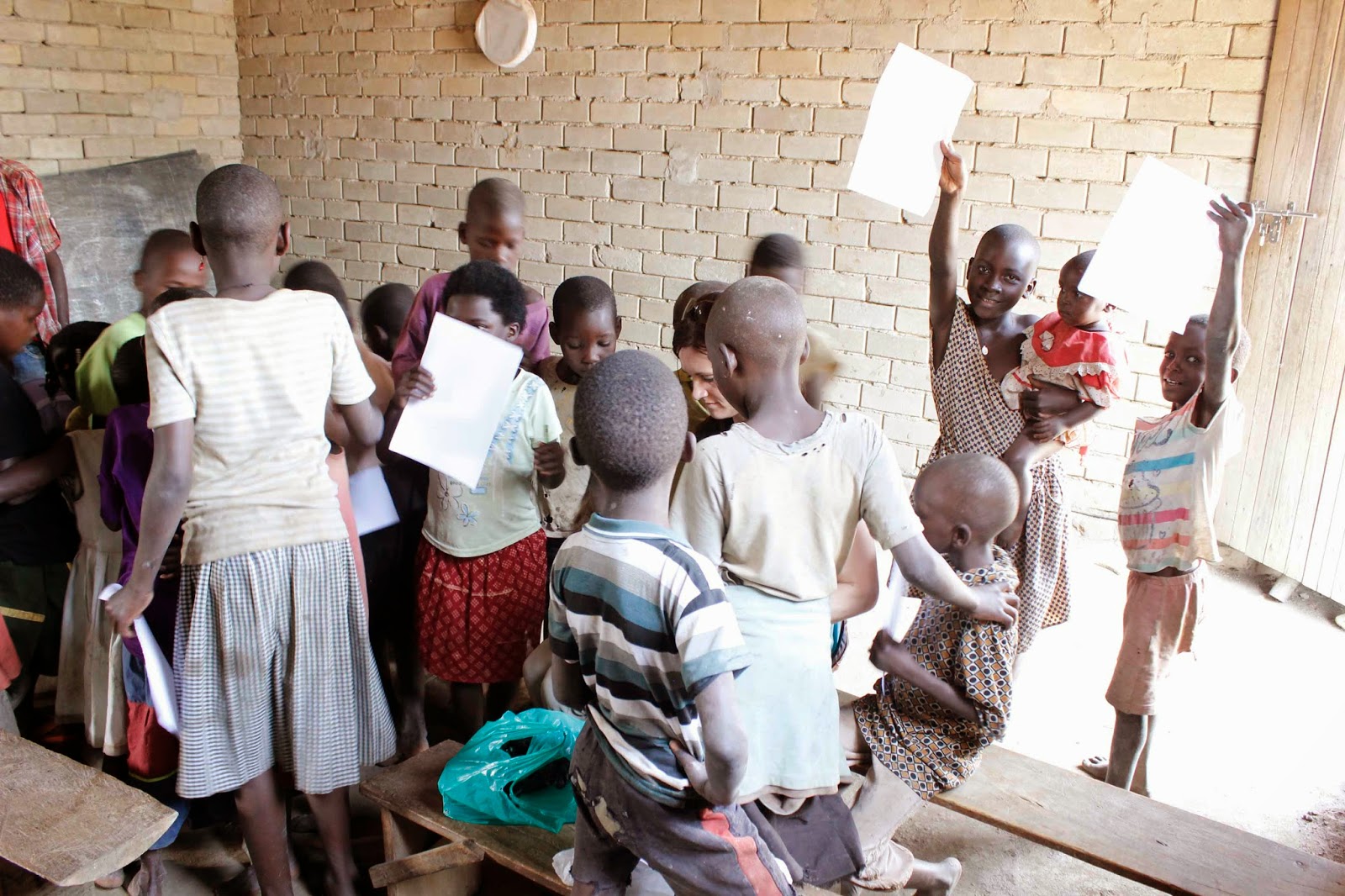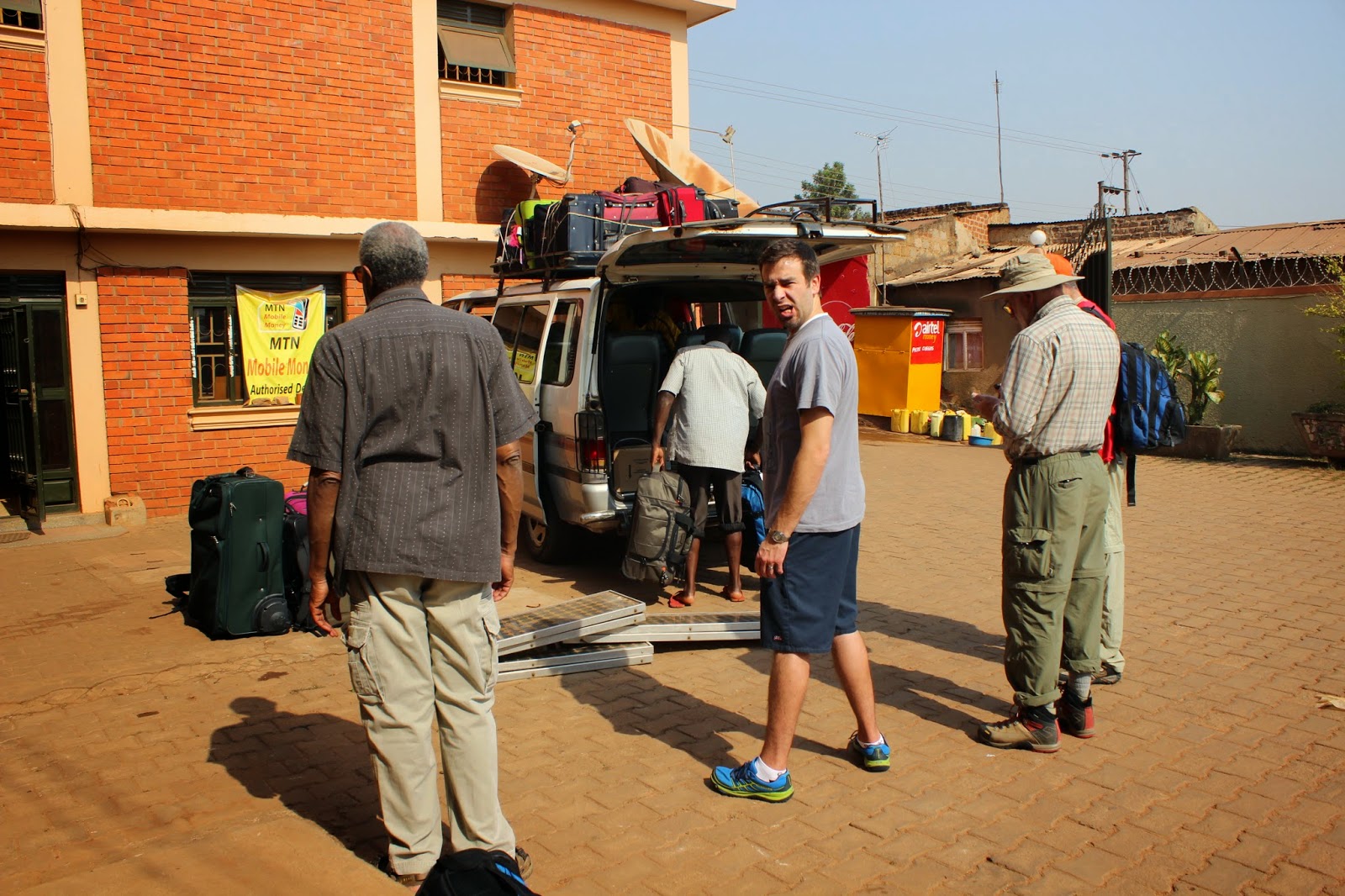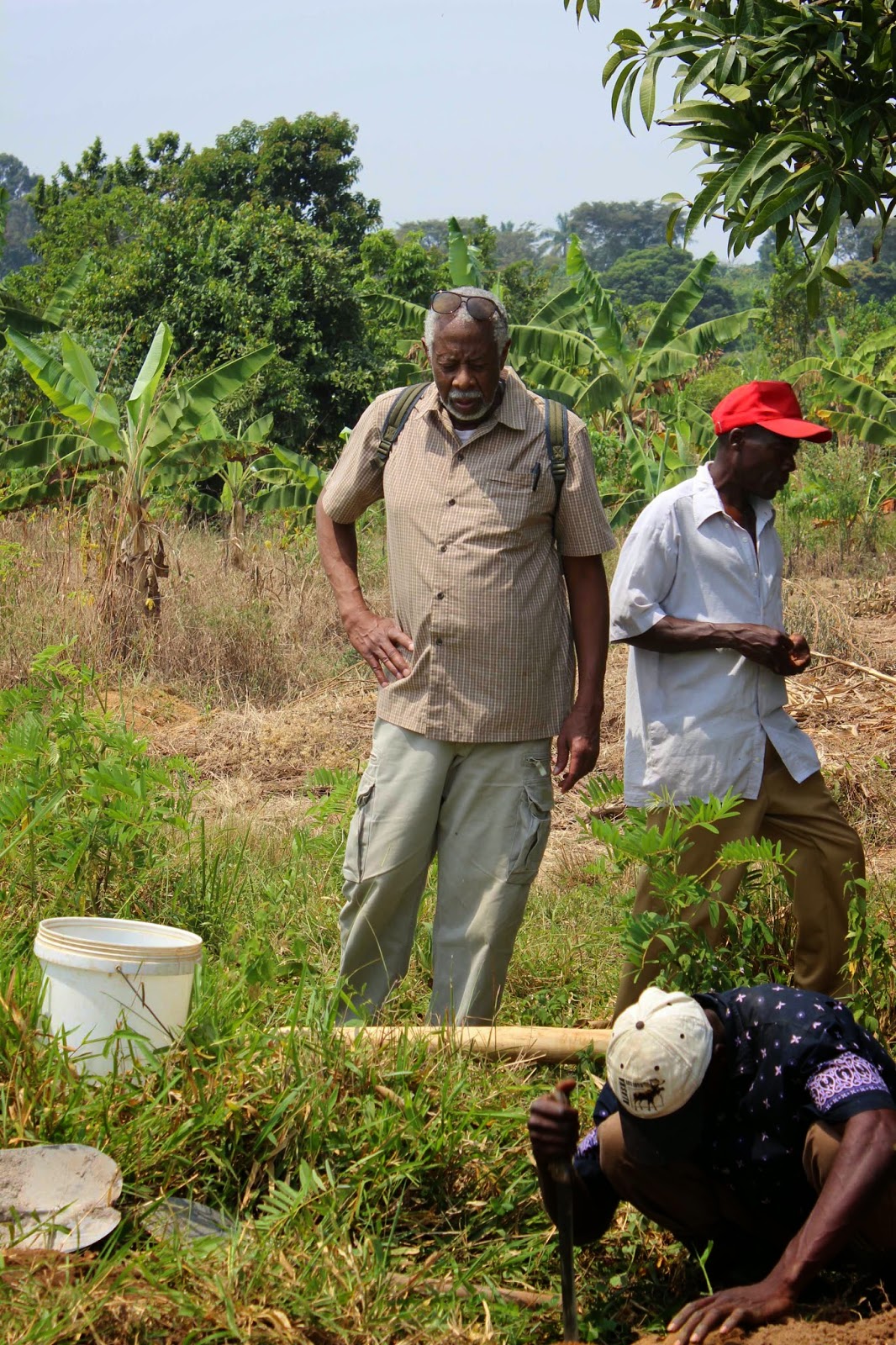GOD’S GRACE SCHOOLYARD in the KIWUMPA SANGIRIYA village
City of Masaka, Uganda
The evenings and nights have been full of pleasant, unique reminders we aren’t in Kansas anymore...nor Salt Lake City for that matter. We dine on dishes like Matooke (dishes made with plantains), Posho (corn meal), and Chapas, and feast on fruits such as plantains, passion fruit, raw cocoa fruit, jack fruit and gnaw on raw sugar cane stalks. Each morning between 3-6am our dreams our backed with the soundtrack of the Muslim call to prayer and messages shared in tongues over the intercom system from the nearby Pentecostal church.
We have spent mornings negotiating with local hardware shop owners for supplies before taking the hour-long drive on dirt roads out to the rural Kiwumpa Sangiriya village each day. Tuesday, we began work on the two new wells, one using the Baptist Method, the other the Auger Method. What are those? Read on!
BAPTIST METHOD WELL
Scott and John have been heading the Baptist Method well site, employing the men to do the work so they will have the knowledge for building future wells. The Baptist Method is an “impact method” of digging a well, which means a hole down to the water level is created by “impacting”, or pounding away the dirt. A sharp bit at the end of steel tubing is hammered down into the earth, sometimes reaching depths of over 100 feet. Once clear water comes shunting out the top of the tubing, there is hope we have struck a sustainable water layer.
Seen here, a great deal of setup is required before even beginning.
Here shows the way water flows up and out of the tubing as it is hammered up and down to deepen the hole.
As of Thursday, we have had some disappointments, as well as some positive findings with this method. At about 38 feet and two full days of intense labor, we managed to reach water. You cannot imagine the excitement of seeing clear water coming spilling up and out of the pipes! However, it dried up by the next day requiring us to dig deeper. We have had to test out different methods for continuing drilling. For now, we estimate the next water level to be as deep as 75 feet...so we will leave the village men with the tools to keep working toward it. We have provided them with the tools and education necessary to continue this project after we leave, and into its completion.
AUGER METHOD WELL
Matt initiated the well site where he tried out the Auger Method. We have tried both methods to see which one, if both, are good ways to dig through their soil. So far each method has proven successful, even though the Baptist Method site is still digging toward a deeper water level. We have run into a few issues with needing to repair a pump and gather supplies in town, but the projects are indeed “well” on their way.
BETTER THAN GOLD...IT’S WATER!
Thursday, we struck it rich! Matt and the team not only fixed a pump at an existing well site to get it working again, our new well site spit up its first stream of fresh water! In America, we take advantage of the easy accessibility of water and most all of our resources; here the ability to get water can require a long walk and steep hike, only to gather water from a surface spring riddled with E. coli and other bacteria. The presence of nearby wells not only cuts down on time spent gathering water, it also provides a cleaner source for healthier consumption.
Working with locals to install the pump into well; first signs of water!; happy happy Matt, Scott, and the villagers; local men enjoying water after we fixed their old well pump
CURRENT WATER SITE
The Kiwumpa village currently has one well working at the God’s Grace schoolyard. The other source for water is located a long walk and a steep hike down to a small surface spring. And need I remind you: what goes down, must come back up. Stella, Nikki and Alexa walked with the village children out to the site to see how they would fair even one trip there and back. Though enamored by the enchanting walk through pineapple fields, passion fruits vines, and coffee bean trees, and winding down the damp and lush steep hillside, the walk would be exhausting and time consuming on a daily regular basis. And we weren’t even carrying water!
Well, Stella tried her hand...er, head...at it and faired just well.
Pineapple fields on walk to current water site; the steep walk down; Alexa with the team that escorted us to the water site. They walk this walk over 3x per day currently to get water.
GOD’S GRACE SCHOOLYARD
Back at the God’s Grace schoolyard, Stella, Alexa, and Nikki have been working with the children and women on a number of projects; and Altaf has been working hard on solar power installation as well as equipping the school with the tablets loaded with education apps for the children.
MICRO-LOANS
Stella, Nikki and Alexa have been continuing work with the women on the micro-lending project. To date, 100% of the loans have been repaid plus interest. All these women are excited about and receptive of this program, becoming empowered through building their own businesses. One thing we are finding, however, is that though they are repaying loans, the women are not saving money. Stella is implementing a savings program, educating the women on the power of saving funds for future personal and business needs.
Nikki and Stella talking with the women about micro-loans and the savings project, smartphones with medical apps, and general needs; list of needs being recorded; Ruth (Pastor Moses' wife, whom both run God's Grace school/orphanage), Nikki, Stella, Alexa
FUNDRAISING THROUGH THE ARTS
Alexa and Nikki spent Wednesday afternoon providing an artistic opportunity for the God’s Grace children, as well as a fundraising opportunity for the community. In the schooling system, many subjects are taught, but art and creative expression are not among them. They decided to have the children draw pictures. We have taken photos of each drawing and the child who created it. We will auction these off, and direct all proceeds toward supporting the village projects, and in specific the education system at the God’s Grace primary school. Look forward to having your own little art piece in-home as a huge thank you should you choose to support!
Alexa handing out art supplies to kids; Alexa trying to explain what it means to "share" crayons...uh-huh; 2 of the beautiful art pieces from the children; Nikki helping guide the kids on creativity
SOLAR POWER
Altaf is the lead engineer of the solar power program. As with all projects IHA and EWB are heading, we are working with the villagers on their specific needs for water improvement, solar power, and other needs. It is our mission to provide what the locals need and can sustain on their own; initiating projects that require expensive upkeep and that do not support the villagers’ specific needs can only leave them worse off. So gathering data and working directly with the villagers is our top mission.
Altaf has installed solar power panels to provide lighting, as well power for certain heating elements for cooking as well as some electronics. He spent time educating the children of God’s Grace school on how to operate tablets equipped with education apps...and just like our children half way around the world, they learned everything in a single afternoon. They all made it through 40 apps in a matter of a couple hours!
Altaf working with the kids on tablets loaded with educational apps. The tablets run on solar power
he also was improving on.
he also was improving on.
INTERNET, SWINGSETS and ENTERTAINMENT
Brian, Reese and Roger have been busy equipping the Masaka LDS church with internet, and are teaching them how to use and maintain it. They have spent time at the orphanage as well as God’s Grace installing swing sets, tetherball posts, and equipping solar power-driven projectors. The kids enjoyed watching films such as Monsters Inc and Peter Pan projected onto a simple piece of hung cloth from a solar-powered projector. Reese and Brian brought their drone camera for taking aerial footage of the sites we visit, not to mention a side effect of undoubted entertainment. It is easy to spot where the drone is, not by seeing where it is in the sky, but by watching the herd of village children screaming and running randomly down below.
John with Ruth, view of the school; Reese showing the village children how to use a camera, out on the swingset and tetherball that was previously installed by Roger and team; view of Pastor Moses and Ruth's home, where they also house the boarding students; sunset over the schoolyard
That should get us all caught up with our stay in Masaka and our visit to the Kiwumpa Sangiriya village and God’s Grace schoolyard. Next stop, Bussi Island...see you there!










































